Update 05.09.2018 -- Run 9 Embedding: Charged Hadron Triggers, FF Check
Up until now, I've only been using the Reversed Full Field (RFF) configuration of the Run 9 dijet embedding. The sample was produced with a Full Field (FF) configuration as well, and since the physics we're investigating shouldn't depend on the field direction, using the FF configuration could potentially double our embedding statistics. The first link below contains the fudge factors and etc. for both configurations, and the second link contains the comparison between charged hadron triggers in (RFF) embedding and pi0 data.
https://drupal.star.bnl.gov/STAR/blog/dmawxc/update-01102018-run-9-embedding-scale-factors-etc
https://drupal.star.bnl.gov/STAR/blog/dmawxc/update-03312018-run-9-embedding-charged-hadron-triggers-corrected
For this study, I only considered pTparton > 5 GeV/c and the same hot tower list as the RFF study above. The charged hadron triggers are defined exactly the same as in the RFF case, and the no. of triggers per bin of partonic pT is given below.
| partonic pT [GeV/c] | no. of triggers |
| (5, 7) | 2 |
| (7, 9) | 37 |
| (9, 11) | 163 |
| (11, 15) | 463 |
| (15, 25) | 2458 |
| (15, 35) | 9371 |
| > 35 | 5048 |
| total | 17542 |
| data (pi0) | 22030 |
All the distributions agree quite well except for two: the recoil track and tower phi distributions, and the total no. of tracks ('nTrk'). The discrepancy in recoil track / tower phi was also observed in the RFF case: the data are systematically lower between -pi and -pi/2. The 'nTrk' discrepancy is striking, though! Weirdly enough, however, all of the track / tower level distributions agree well. So it might be an issue with just the 'nTrk' variable...
First, the trigger distributions:
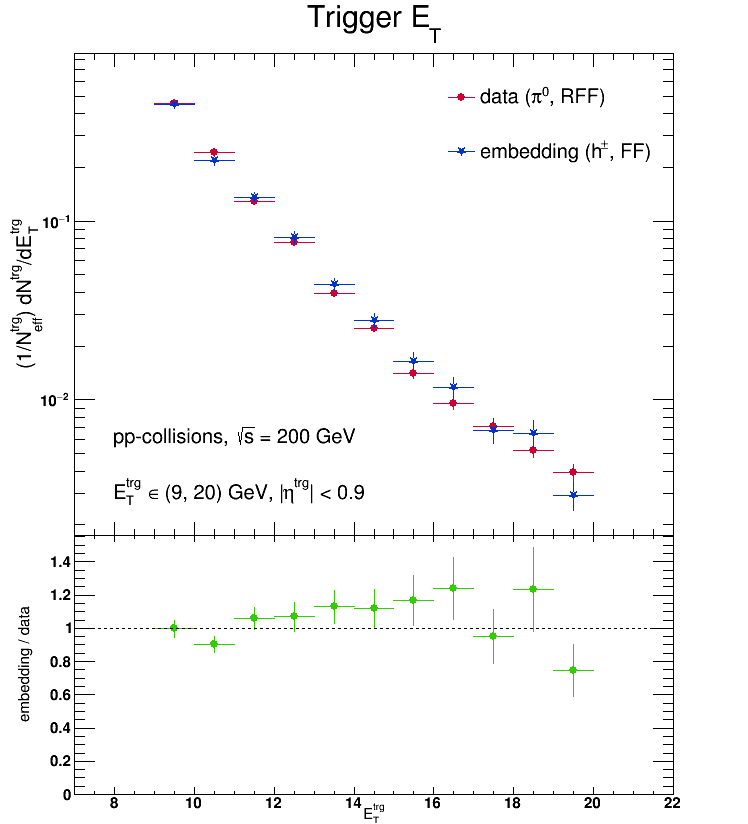
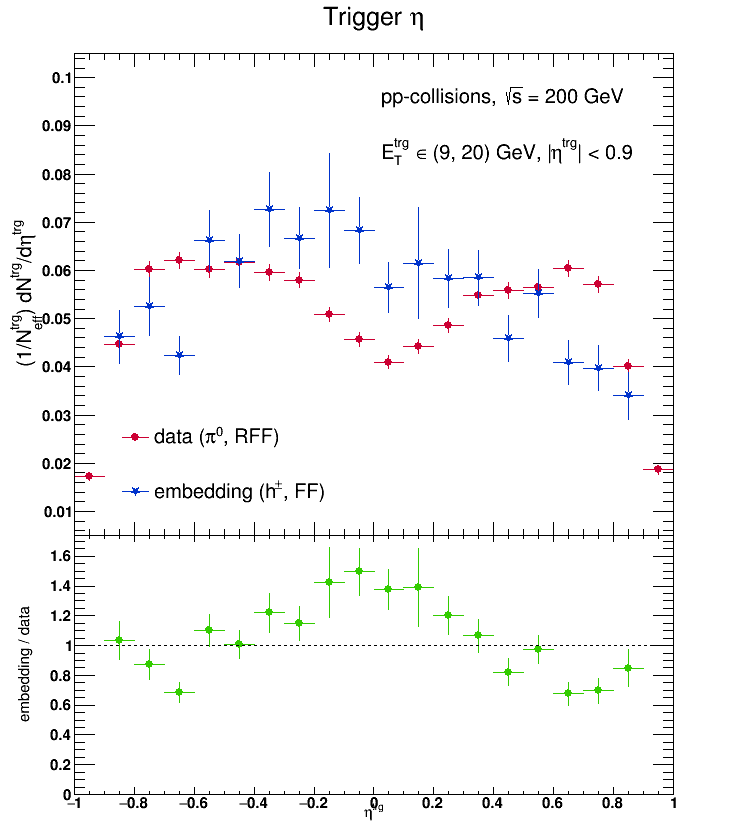
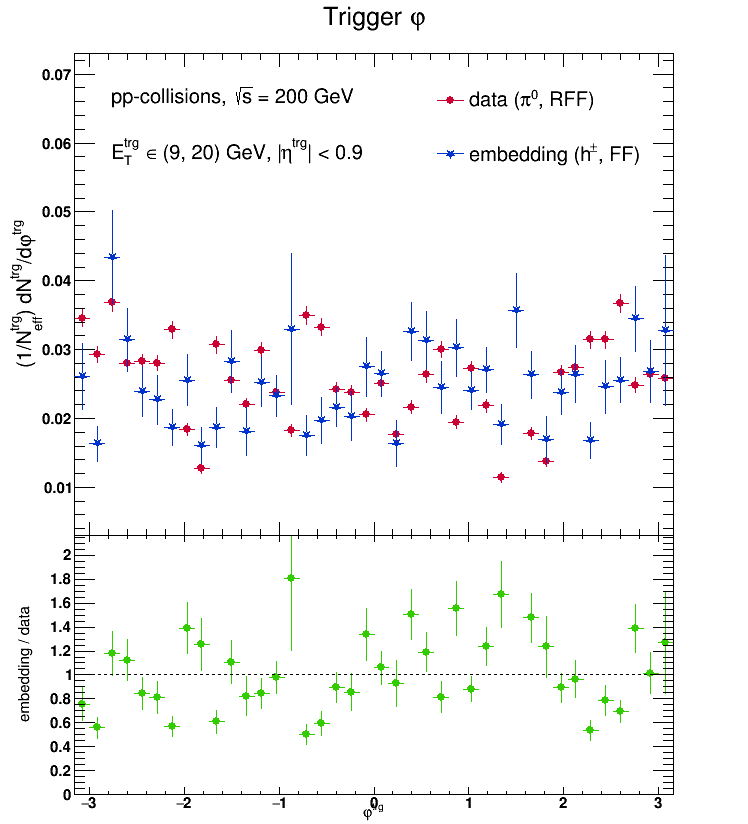

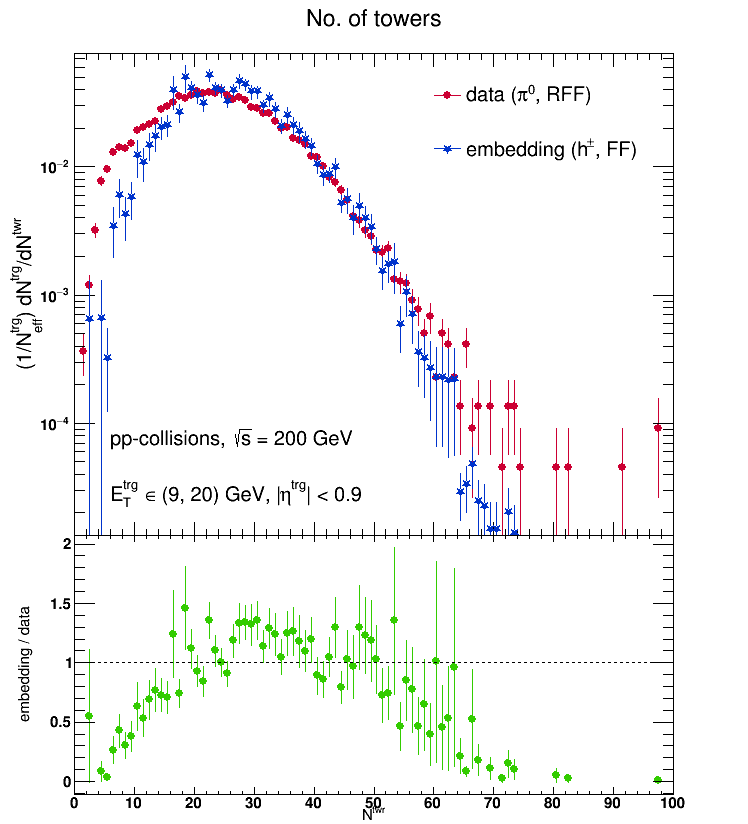
Next, all (not just recoil) track and tower distributions:
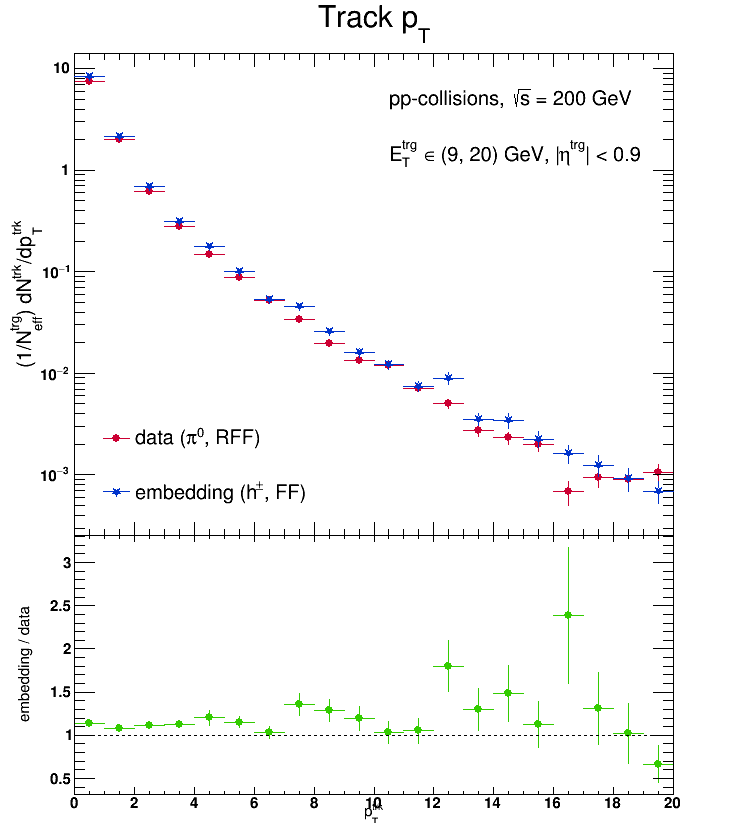
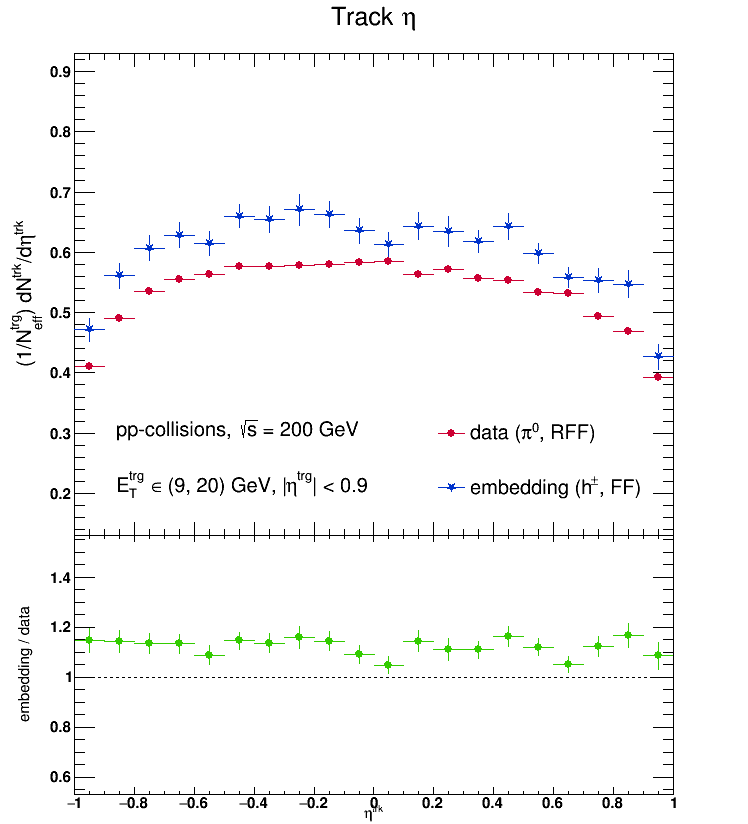
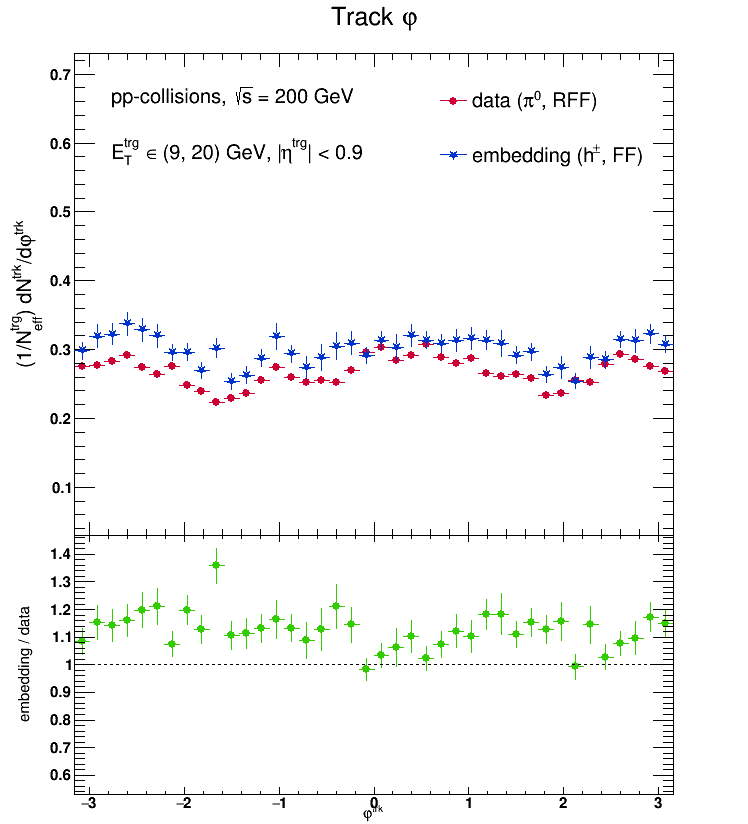
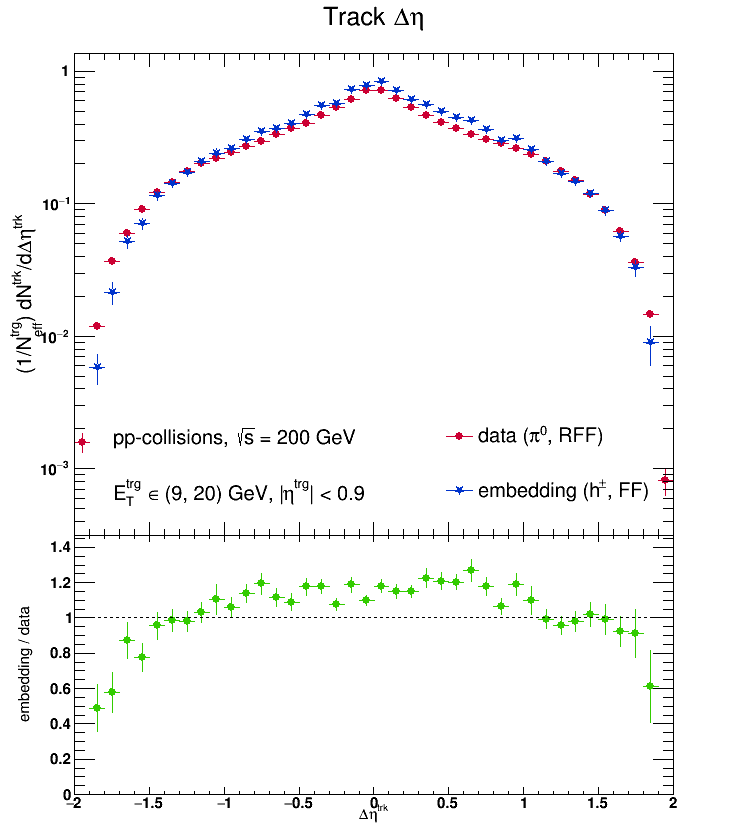
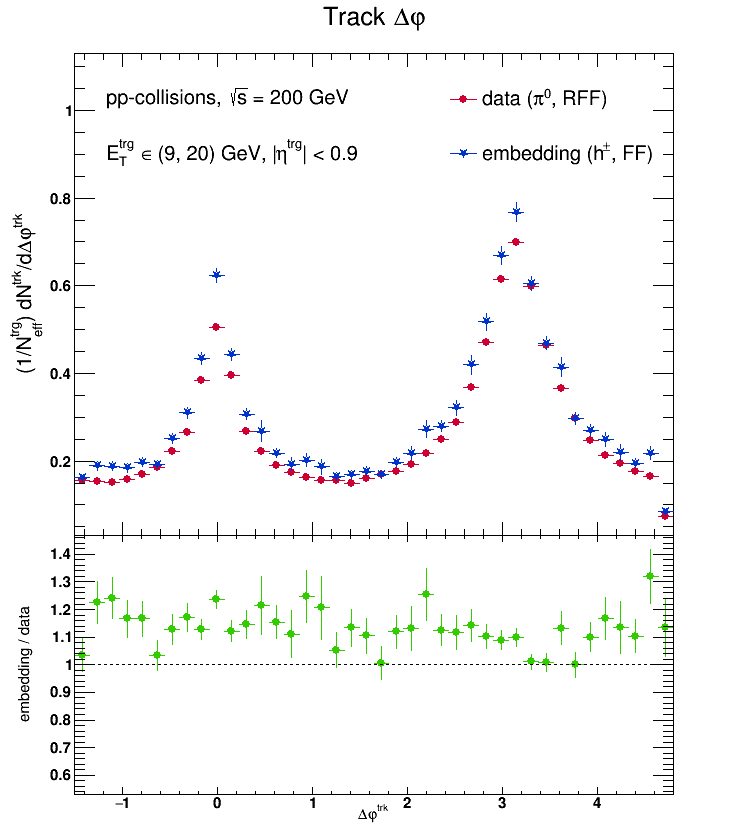
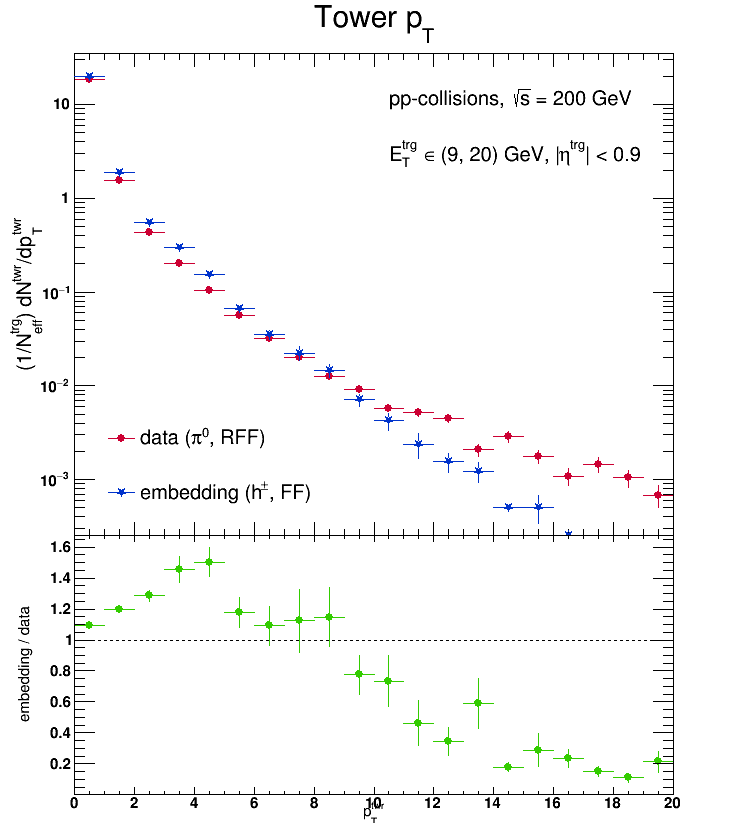
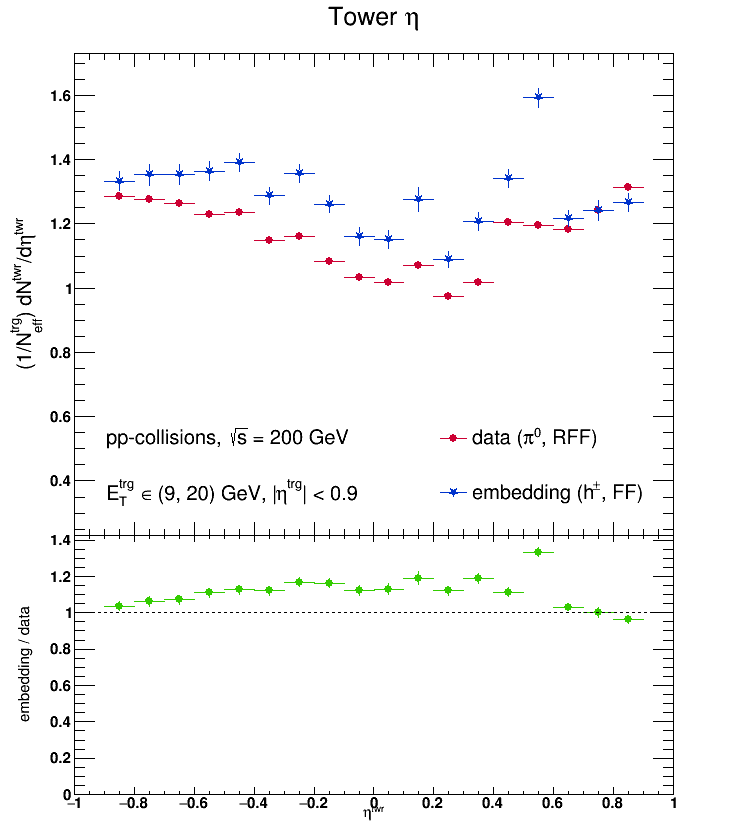
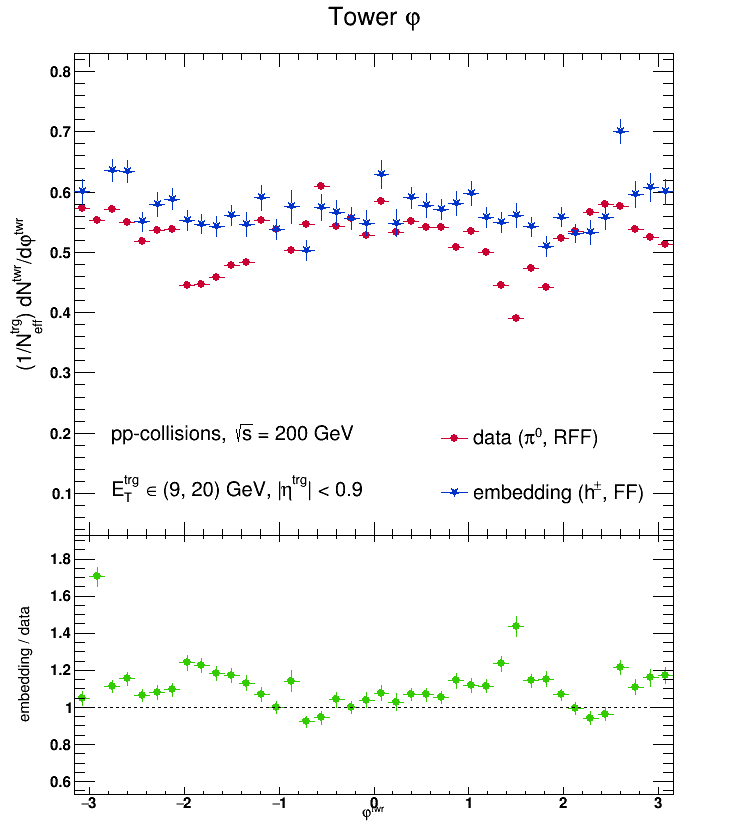
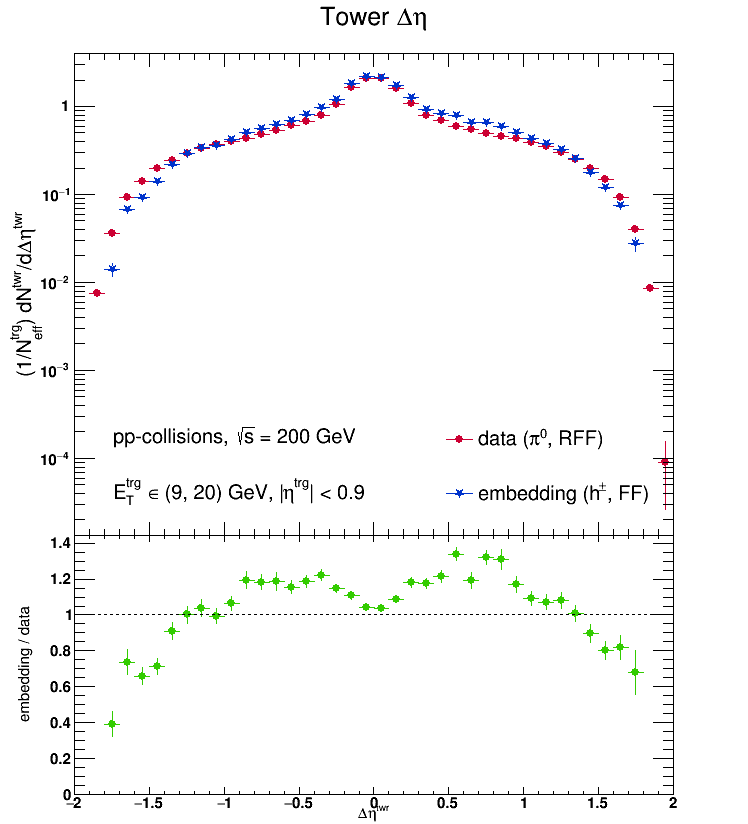
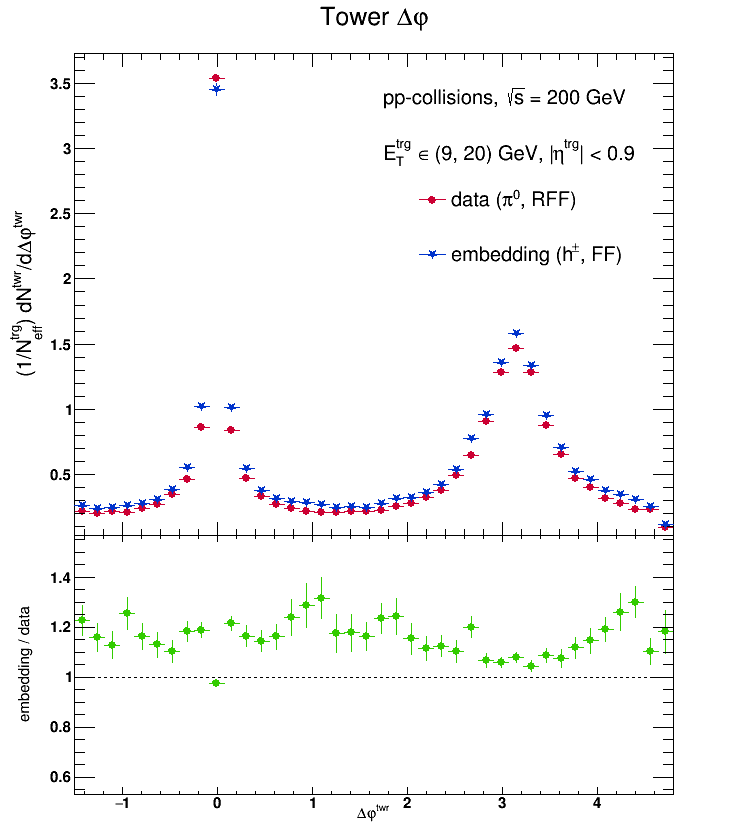
And lastly, the recoil track and tower distributions:
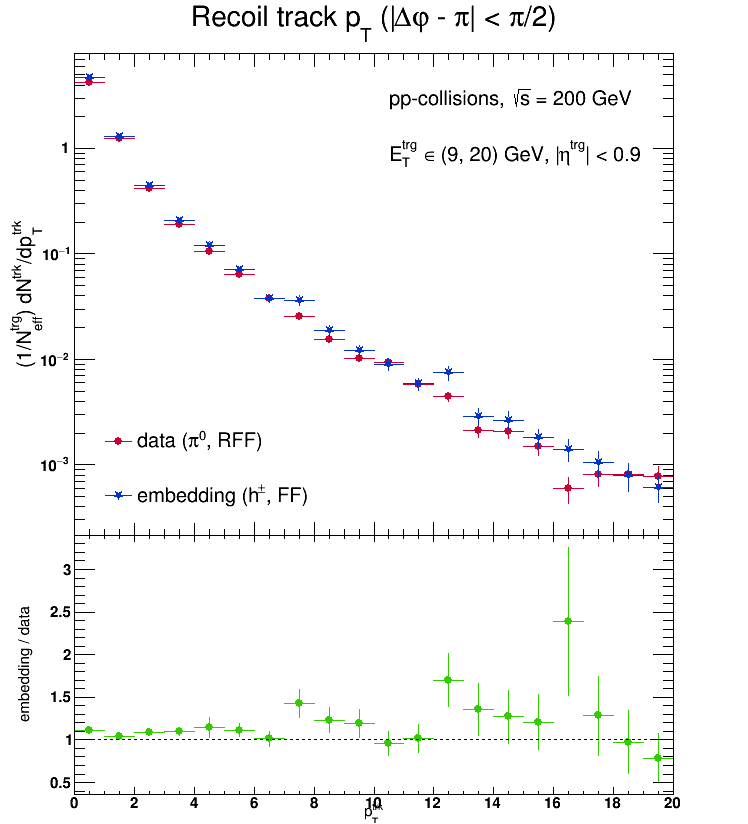
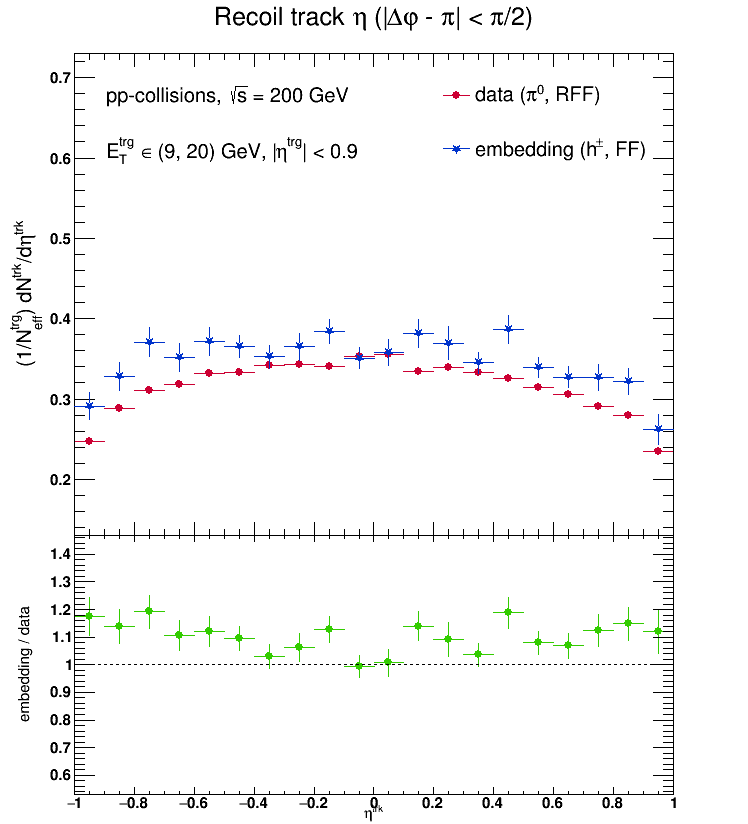


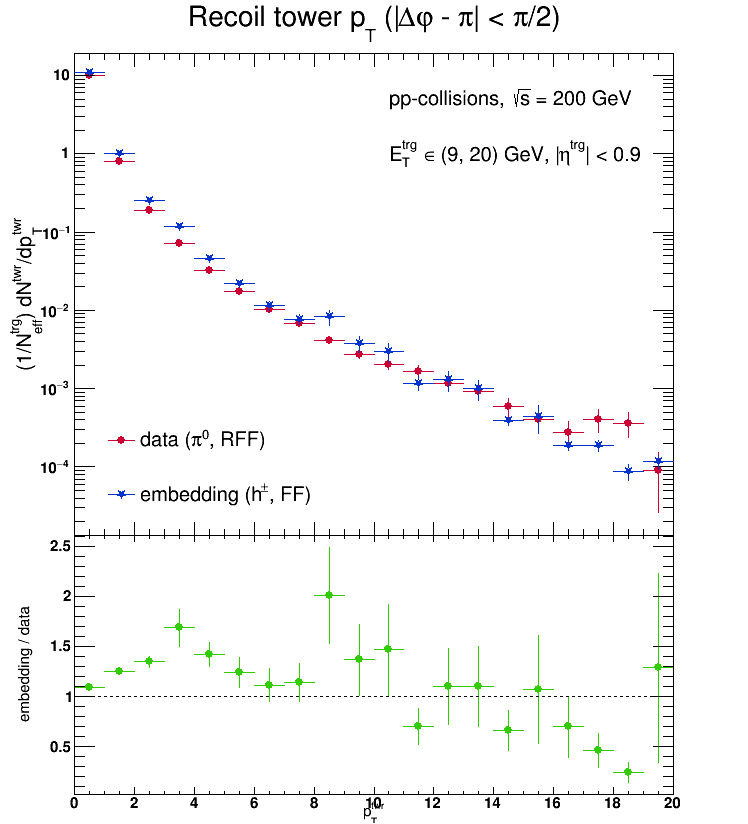
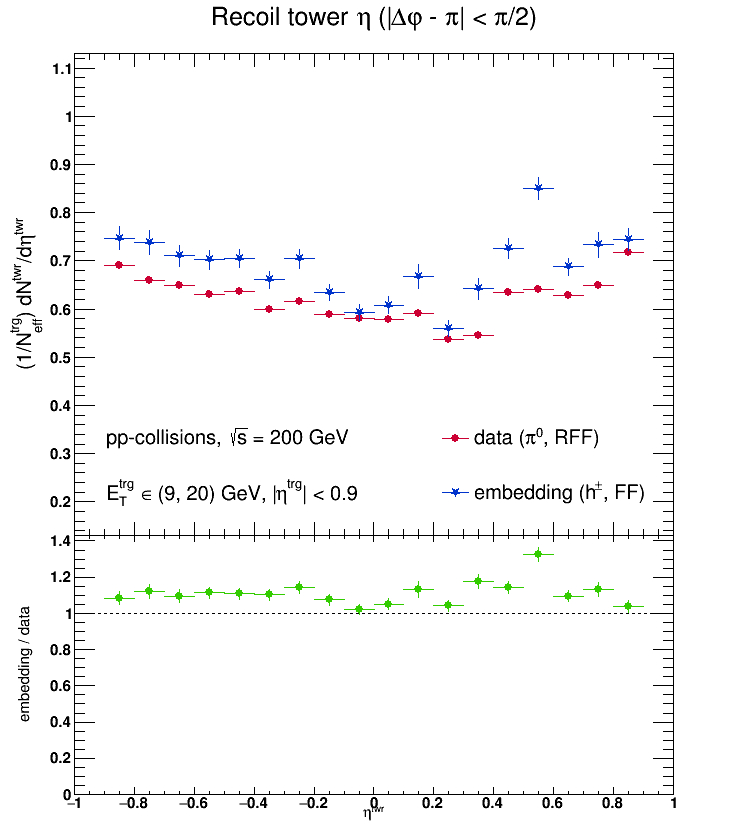
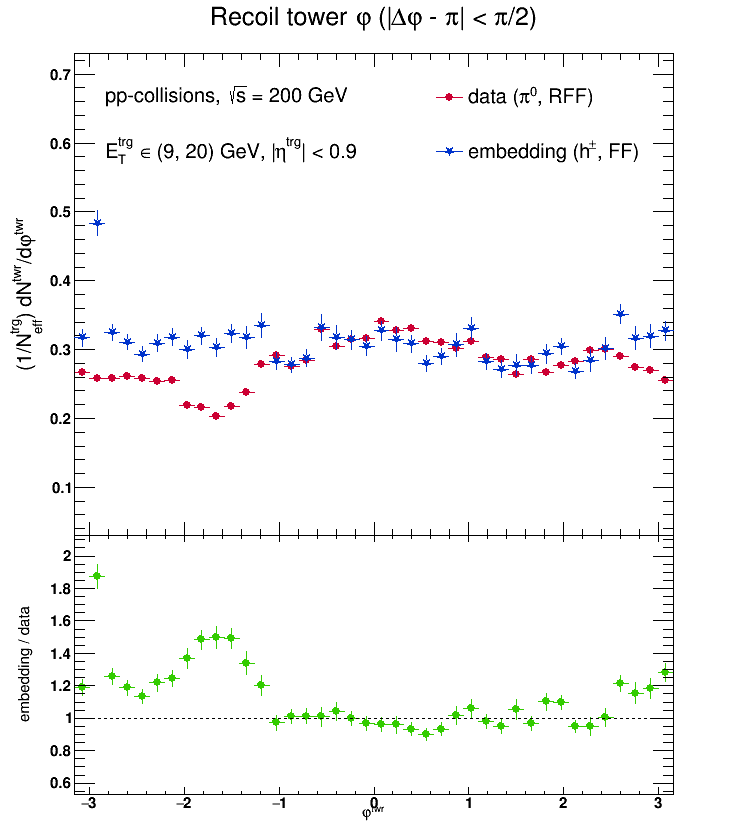
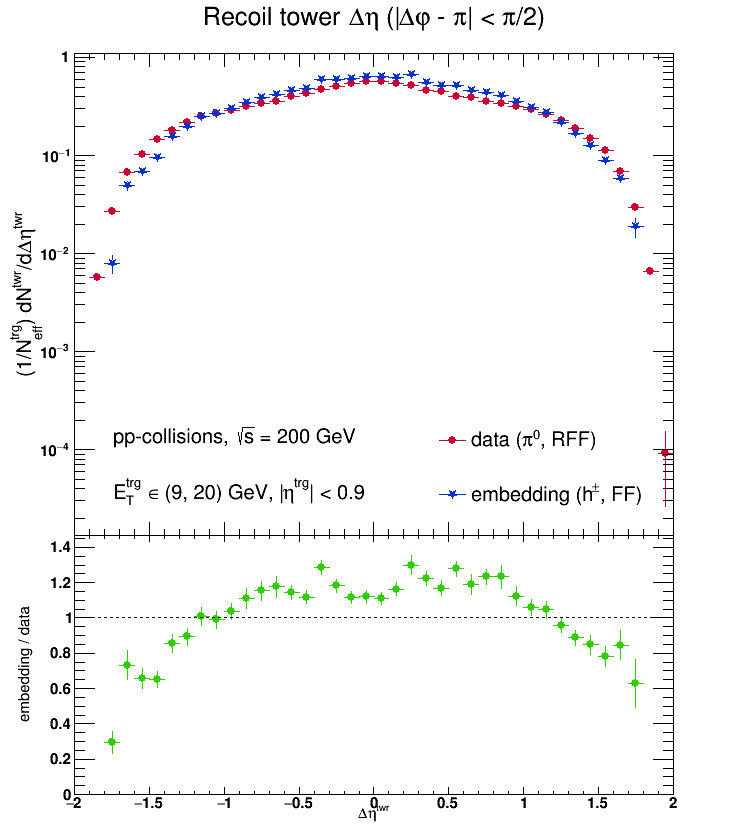
- dmawxc's blog
- Login or register to post comments
